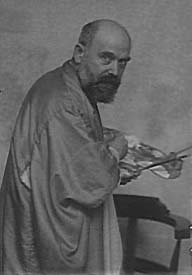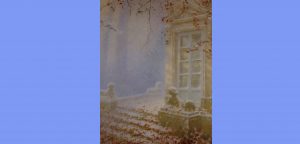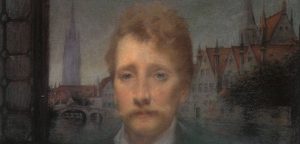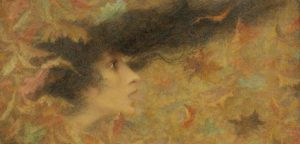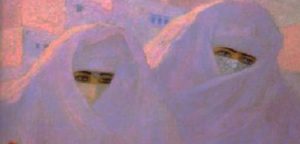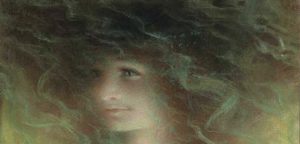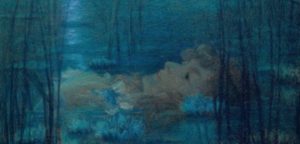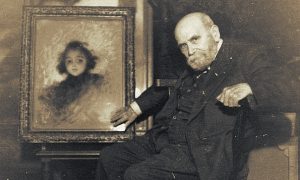Lucien Levy-Dhurmer was born on September 30, 1865 in Algiers.
1865 - 1953
Lucien Levy-Dhurmer

description
A French artist, graphic artist, ceramist and designer.
He was born into the Jewish family of Levy in Algeria. He studied painting and sculpture in Paris. When the artist was young, famous and respected French painter Alexander Cabanel was his teacher. In his studio, Lucien Levy mastered the skills of academic drawing, as well as the technique of working with sculpture. His other teachers: Albert-Charles Wallet, then Rafael Collin made Levy interested in Symbolism and Art Nouveau.
Picturesque works by Lucien Levi-Dhurmer are based on the rich traditions of Symbolism, while his design developments are the brightest example of Art Nouveau of the late 19th century. In collaboration with Clement Massier, the artist revolutionized the way of working with ceramics, discovering innovative forms of things and applying entirely new materials and ways of working with them. Original and rich in deep sense artist’s work had a great influence on the formation of Art Nouveau in France and the whole world.
Key Ideas:
– The paintings of L. Levy-Dhurmer are distinguished by their originality and the vivid individual style of the author. Saturated with a mysterious meaning and shrouded in a mysterious haze, images are often compared to the paintings of Pre-Raphaelites and Symbolists, while radiant, pure colors resemble the palette of Impressionists.
– The central figure of the paintings is mostly a woman whose enticing image is full of charm and nobility. The author often depicts his heroines in a natural environment, interacting with the elements. Bright examples of such works are such paintings as “Wind Gust” created in 1896 and “Autumn Bride”, created in the same year.
– Contemporaries of Levy-Dhurmer noted his outstanding talent in working with pastel. One of the contemporary critics of the artist described his works: “… his pastels amaze us with their perfection and the originality of the author’s talent”. In this technique, the artist created many works, which are distinguished by the finest transitions of color nuances, gentle combinations of shades and bright emotionality. The most famous is the series of pastel works “Algeria”, which Levy-Dhurmer created during his journey to his homeland in the 1900s.
– Lucien Levy-Dhurmer make the greatest mark on the art of ceramics, being an innovator in this form of decorative creativity. Together with Clement Massier, the artist made a revolution in pottery, revealing brilliant glaze and giving completely new forms to his works. Clay vases, dishes and tiles were made in the Art Nouveau style, which ensured that Levy-Dhurmer’s paintings were very popular with the public. The design of ceramics was inspired by Japanese and Middle Eastern art, while its surface was covered with a special glaze that creates complex optical effects. A unique feature of the artist was his ability to create figures and patterns that flicker and glow on the pottery pieces, as if they live their own life and have a deep meaning under their surface.
1865
1887
1895
1897
1900
1910 - 1914
1952
1953
The birth of the artist
Started working as an artist at the ceramics factory in Cannes
Started working as an artist at the ceramics factory in Cannes. First, he worked as a decorator, then became the artistic director of the studio of Clement Massier, who had an experience in making ceramics; like-minded people were fascinated by the technique of metal gloss, partially lost. Mastering this method of ceramic glaze, the painter went further: he invented his original technique, characterized by the brightness of pearly luster, spectacular color solutions.
He met Belgian poet Georges Rodenbach
Having returned to Paris, he met Belgian poet Georges Rodenbach and became his close friend. Rodenbach introduced Levy-Dhurmer to the artistic circles of Paris and promoted the personal exhibition of the artist in 1896. This exhibition, at which 24 works in various technique were presented, played a major role in the career of Levy-Dhurmer by making his name known among his fellow artists and public. At this exhibition, the artist first used double surname Levy-Dhurmer, adding to it a part of his mother’s surname.
The artist visited Italy, Spain, Holland, North Africa, Turkey
He made numerous trips around Europe and the Middle East. The artist visited Italy, Spain, Holland, North Africa, Turkey, from where he brought idealized landscapes and scenes from the life of the local population. These works, made mainly with pastel, were shown at several solo exhibitions.
He was awarded a bronze medal at the World Exhibition in Paris
He was awarded a bronze medal at the World Exhibition in Paris. In the 1900s, he traveled to Algeria, where he was born and raised. Here he created a series of successful and demanded works devoted to the inhabitants of this exotic country. In the same period, he began to get involved in music. He met Debussy and created paintings inspired by the works of Beethoven and Faure.
Created a series of fourteen oil paintings
Created a series of fourteen oil paintings for a dining room in one of the Parisian houses. The artist became a well-known portraitist; his works imbued with light sadness and a special atmosphere enjoyed great popularity among the public. The artist participated in many collective exhibitions and organized several solo exhibitions.
The retrospective exhibition of the artist's works
A retrospective exhibition of the artist’s works was held at the Museum of Decorative Arts in Paris.
The death of the artist
He died on September 24, 1953 in Le Vesinet, France.

